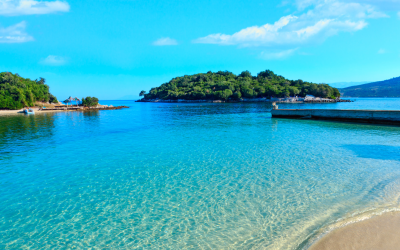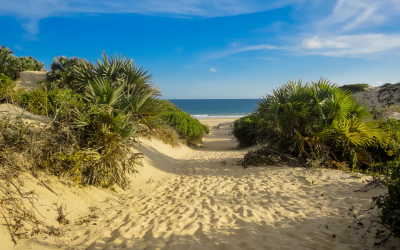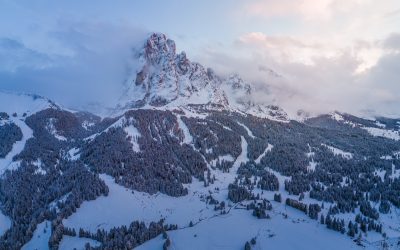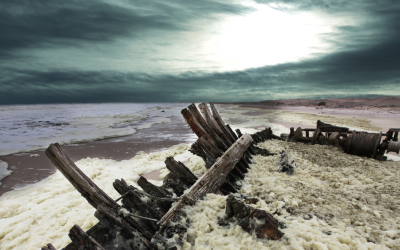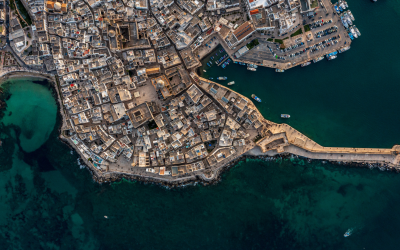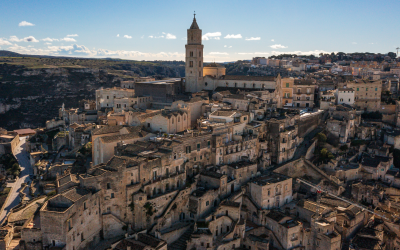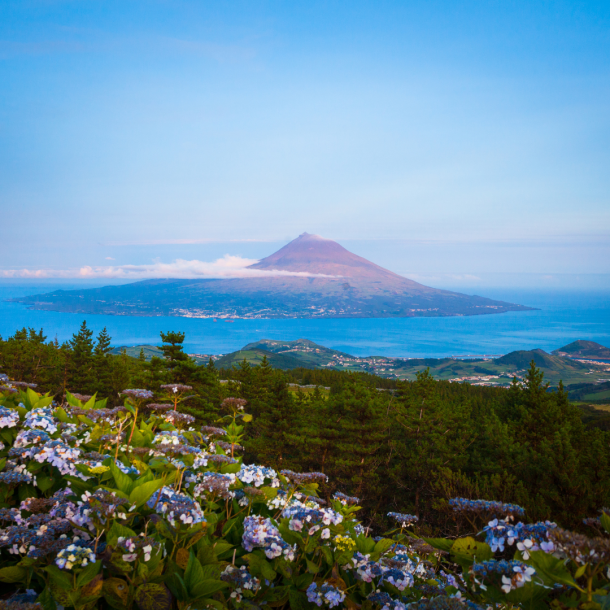When exploring from one region to the next in Italy, north to south, different dishes and ingredients change dramatically, depending on the region’s location, climate, and the people within. Each region has its highlights, while food in Puglia, known as the “Heel of the Boot”, stands out as some of the most influential and delicious.
Orecchiette
Translated to “little ears”, orecchiette is Puglia’s most famous form of pasta. Orecchiette con cime di rapa (orecchiette with broccoli rabe) is one of the most popular dishes of Puglia and thrives in the seaside city of Bari. Orecchiette have the perfect shape for scooping up the delicious pieces of the blanched, leafy green.
This simple yet complex dish is enhanced using every Italian’s true love, cheese. A freshly grated and aged cheese such as Pecorino Romano typically makes the perfect companion. Depending on what part of Puglia you order cime di rapa, it is likely to find a sprinkle of crushed red pepper flakes on top. To finish it off right, a generous amount of Pugliese olive oil (some of the best in the country) is used to dress it.
When it comes to food, Bari has a bit of everything that Puglia has to offer, but none is as special as the experience of Strada delle Orecchiette, located directly across from Castello Svevo di Bari. Here, you will find the famous Pasta Grandmas. Yeah, you heard that right. To be more precise, Orecchiete Nonnas. Its amazing to watch how fast these beautiful ladies knead semolina before rapidly shaping it into the delicious ear shaped pasta like its nothing. They sit in front of their houses every morning for hours, making and selling fresh pasta as tourists pass by and watch. Their beautiful, wrinkled hands put on an absolute show as they crack jokes while cranking out massive amounts of orecchiete.

Strada delle Orecchiette


Pane di Altamura
Italy is of course well known for its culture around bread, as Puglia may be home to the best of the best. Named after a town situated atop a plateau, Pane di Altamura is a country-style sourdough bread that has been consistently produced in the area for centuries. You read that right: centuries. It is THAT good. It is made using only local durum wheat, natural yeast, salt and water. If only the rest of the world could catch on to this ancient bread method rather than adding preservatives to everything.
These gigantic loaves of bread are kneaded throughout bakeries and households all over Altamura, then baked in large brick ovens. Immediately after the first bite into the golden, thick and extremely crunchy crust, a touch of sourness hits your palate. Like a fine wine, the flavor is complex and subtle as it evolves into an earthy sensation with even a little bit of nuttiness. One of the most special characteristics of this bread is its shelf life. As it was once used to feed poor communities for weeks at a time, the bread needed to be extra durable.
This bread is so good, that it is the only bread in Europe to receive Protected Designation of Origin (PDO) status. Because of this, the bread is highly regulated and must follow all PDO guidelines. These include using specific varieties of wheat, a certain specification of water, a consistent production method and a final crust which must be more than three millimetres thick. Even the Latin Poet, Horace, wrote about Pane di Altamura 2,000 years ago:
“Altamura bread, by far the best bread to be had, so good that the wise traveller takes a supply with him for his onward journey.” (Book I, V of Horace’s Satires, 37 BC)
I agree, Horace, I agree.
Thankfully, Puglia puts salt into their breads, unlike other regions that rely a little bit too much on tradition rather than taste. *Cough* *Cough*, Tuscany. Yes, Florence, this is unfortunately a jab at you.
Focaccia Barese
One may typically associate focaccia with Genoa, but Bari has a style of its own: Focaccia Barese. There is a constant debate in Italy about where the best focaccia comes from, while the Genovese roll their eyes at all other forms, especially Barese, viewing it is pizza rather than focaccia. Step aside Genovese, because this focaccia is indeed delicious. The two kinds of focaccia are entirely different, but that is what makes Italian food so beautiful.
This street food star of Bari is traditionally prepared with a dough that combines semolina, wheat flour, and mashed potatoes. The fluffy and delicious treat is topped with an abundant amount of cherry tomatoes, oregano and olives, then drenched in olive oil. Focaccerias and bakeries are found throughout the city and become extremely busy around late morning. If you don’t get to the focacceria early enough, it likely they will sell out, as locals indulge in focaccia routinely.

Focaccia Barese
Taralli
Not only do the Nonnas excel in orecchiette making, but also with Puglia’s most famous snack, taralli. These happy and fun little crunchy snacks are the perfect pairing to an aperitivo and are made only with a base of wine, olive oil, salt and flour before boiling and baking. Each Nonna has their own special taralli with different flavors, like onion, pepperoncino or tomato. They each claim to be the best, so I recommend trying them all! The only way to properly walk around Bari Vecchia is with multiple bags of taralli in your hands. These circular treats are found everywhere in Italy from grocery stores to local boutiques, but Puglia is home to the best as it is special to eat them when they’re homemade. If you need something crunchy when visiting Puglia or Italy in general, nothing beats taralli.
Fave e Cicory
One of the most traditional dishes of Southern Italy, this dish is a true testament to “La Cucina Povera”, or poor cuisine. Italians are probably best known for using every single ounce of an ingredient without wasting it, making fave e cicory one of the best examples. Local fava beans are soaked, drained, and then slowly cooked before being blended into a smooth and creamy purée. Next, quickly blanched wild chicory, or other greens, are served either directly on top or to the side. For that added Pugliese flare, delicious extra virgin olive oil is drizzled over top with a generous pinch of sea salt. A crunchy piece of bread is a nice vessel to dip into the beans, but it isn’t necessary. This famous dish is served all year, but is perfect for the colder winter months. The use of a few simple ingredients is Italian food perfection.
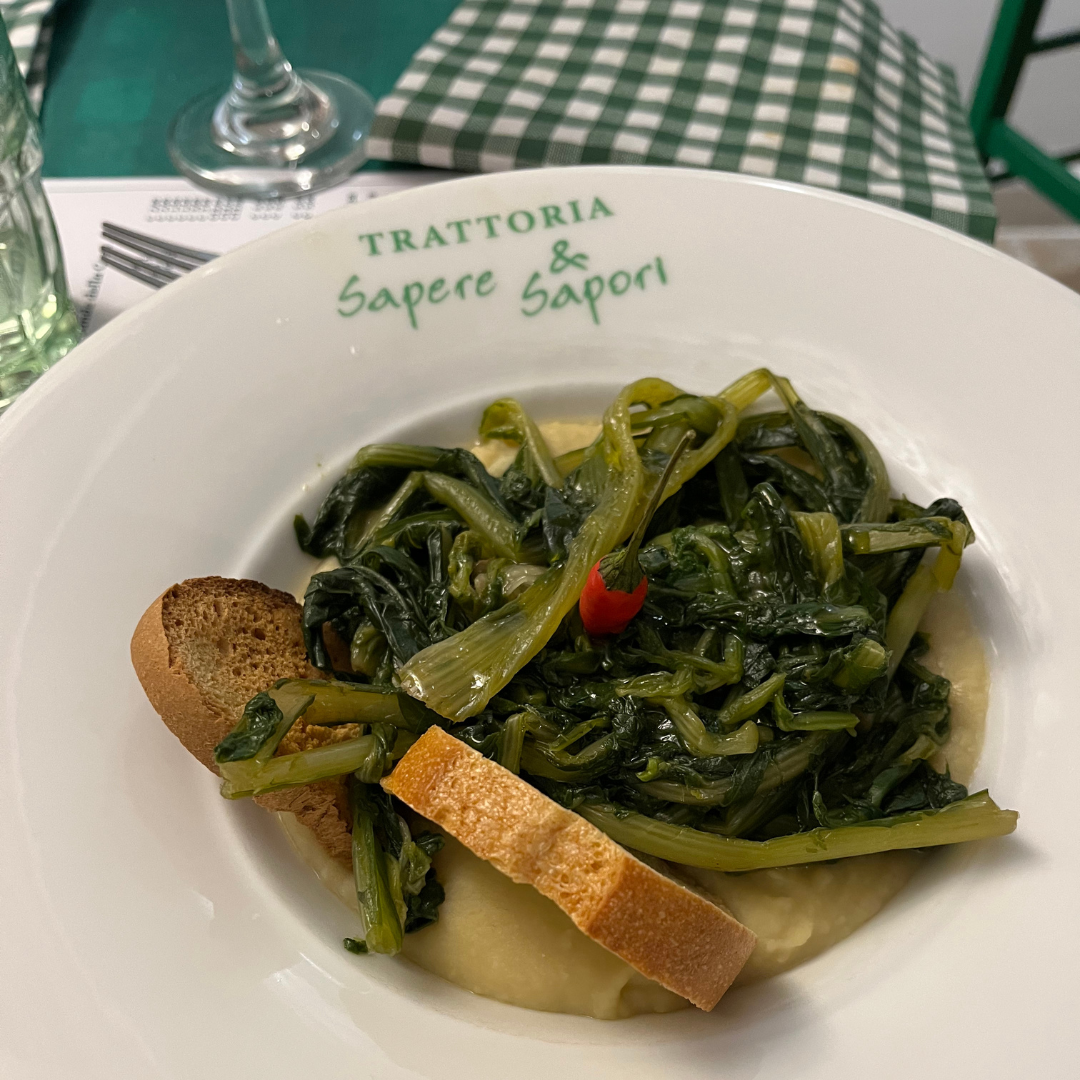
Fava e Cicory
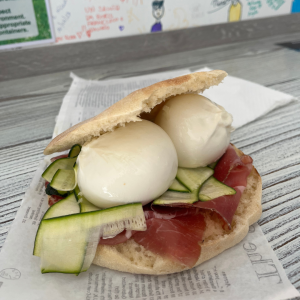
Burrata Panino
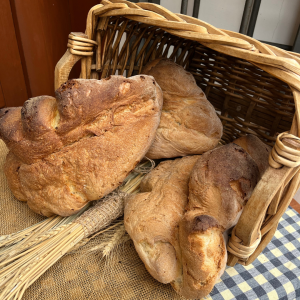
Fresh Bread
Olive Oil
Known as “The Gold of Puglia,” extra virgin olive oil is not only some of the best in Italy but the entire world. When exploring the region, it isn’t hard to get lost in the olive groves that grow in every direction, as the landscape is like a never-ending sea of olive trees. The cultivation of oil from the trees has been around for thousands of years and is continuously passed down from generation to generation.
Both the quality and characteristics of this extra virgin olive oil make Puglia the largest producer in the country, thanks in large part to the quantity of trees but also the nutritional value and taste. In fact, 37% or more of all Italian extra virgin olive oil is produced throughout the Puglia region. The Pugliese “super food” contains oleic acid, tocopherol, powerful antioxidants, carotenes and vitamin E, which help in prevention of degenerative disease. The taste is slightly bitter and spicy with some grassy aroma. Thanks to its flavor and nutritional value, it is often said to be the most palatable in the world. Forget the apples! A shot of Pugliese extra virgin olive oil a day keeps the doctor away.
Fresh Cheeses
If there is one food that Puglia is most famous for amongst Italians, it is probably the fresh cheese. Valle d’Itria, the valley between Bari and Brindisi, is the best area in Puglia, and perhaps Italy, for the production of dairy, specifically the freshest Burrata you have ever laid eyes on. Local dairy farms and producers, known as “Caseficios”, are scattered all over this region as some of the best fresh cheeses from Italy are made here.
Every morning, fresh milk is transformed into pure happiness. Only open for a few hours at a time, locals make their way into their favorite Caseficio to grab the freshest of cheeses for the day. You can watch the cheese mongers work their magic as they shape milk into different shapes and sizes. There isn’t much more joy for a cheese addict than watching these magicians reveal a handmade ball of incomprehensible perfection from a bucket of wet, creamy brine. Burrata, Mozzarella, Caciocavallo, Stracciatella, Scamorza, Ricotta, fresh milk and yogurt are just some of the specialties you will find in any Caseficio around Gioia del Colle. Are you salivating yet…?
Wine
Without wine, what is cheese? Puglia isn’t by any means the best region in Italy for wine, but it is well known for its incredible production of one of the most popular grapes in Italy, Primitivo. This full bodied red wine thrives in a region full of sun and heat. The warmth of the region provides a wine with a high alcohol content, an intense deep ruby color with purple hues and beautiful aromas of dark fruit, berry jam and violet. Primitivo is one of the most beloved Italian wines world wide, especially in the United States, for its ability as a great “drinking wine” with friends or a nice pairing for a special meal. The best areas for Primitivo are Gioia del Colle and Salento. The wines of Gioia del Colle are a little bit more elegant on the palate due to their higher altitude, mineral-rich soils and a colder climate. Meanwhile, in Salento, Primitivo has a much fuller body, higher in alcohol, and even more fruit forward from the overall high temperatures and sun exposure. When visiting Puglia, it is easy to fall in love with Primitivo. For the extreme wine lovers out there, make sure to try Puglia’s best kept secrets, Nero di Troia and Negroamaro. These two delicious native grapes have hardly been exposed on the international market as locals seemingly hide them away for their own consumption.
Fresh Seafood
The Mediterranean Diet is on full display in Puglia as the entire region runs along the Adriatic Sea, making it the place for some of the freshest seafood in Italy. Anchovies, tuna, sardines, swordfish, sea bass, mackerel, bonito, mullet, grouper and sea bream are just a few of the fish of note, while mussels, clams, shrimp, crabs and urchin are at the forefront of the shellfish category. Probably most notably, octopus and cuttlefish garner a lot of attention as the main event of many dishes.
You can always find a fresh catch of the day, but three dishes steal the show of Puglia’s seafood scene. Cozze alla tarantina is a mouthwatering appetizer loaded with meaty mussels served in a spicy tomato sauce. Next we have Cozze ripiene which is mussels stuffed with a combination of breadcrumbs and cheese soaked in a rich tomato sauce. Third is spaghetti allo scoglio, also known as spaghetti al frutti di mare (fruits of the sea), a classic seafood pasta drowned in a sauce made of mussels, clams, shrimp, squid and fresh cherry tomatoes.
If you’re looking for something really extraordinary, head to the ports of each town in the late morning or early afternoon, as fishermen are always ready to sell their raw fresh catch. For the adventurous foodie, Some of the more you can eat what I know as “sea rocks.” Yes, rocks. It’s quite hard to say what they are actually selling, as they resemble a rock, but the inside is full of a gooey, sweet creature. I hope you have a strong stomach. You’re going to need it.
Octopus Panino
Panino col polpo is one of the more unique sandwiches from Italy. The adventurous foodie can find this panino throughout the region, but it originates from the area surrounding Bari. This eccentric sandwich is made with a combination of braised/grilled octopus, heavenly Pugliese bread, fatty olive oil, fresh herbs, salt, and black pepper. Some places even throw a creamy and seducing ball of Burrata on top for an explosion of flavor. There is no way to eat this sandwich without making a total mess, but its worth it.
When visiting Bari, make sure to stop in Mastro Ciccio, one of the more unique sandwich shops out there that is best known for the Octopus and Burrata panino, just as wild as it is delicious.
Horsemeat
Thanks in large part to the influence of different cultures, some very interesting dishes can be found in Puglia that are not as common across the rest of the country. Pezzetti di Cavallo, translated as pieces of horse meat, might be a shock to see on the menu for most, but it is quite common in the south. This traditional Southern Italian dish uses horse meat as the main ingredient. The meat is usually seared before it is slowly cooked for hours in a tomato sauce full of the typical trio of carrots, celery and onion with olive oil, bay leaves, and chili peppers. The bay leaves and peppers are crucial to balance the sweetness of horse meat. It is most commonly served as a stew partnered with some fresh, crunchy bread. Affection for horses aside, this sweet and gamey meat is quite tasty when it is properly slow cooked in a sauce with an extra dose of Southern Italian love.
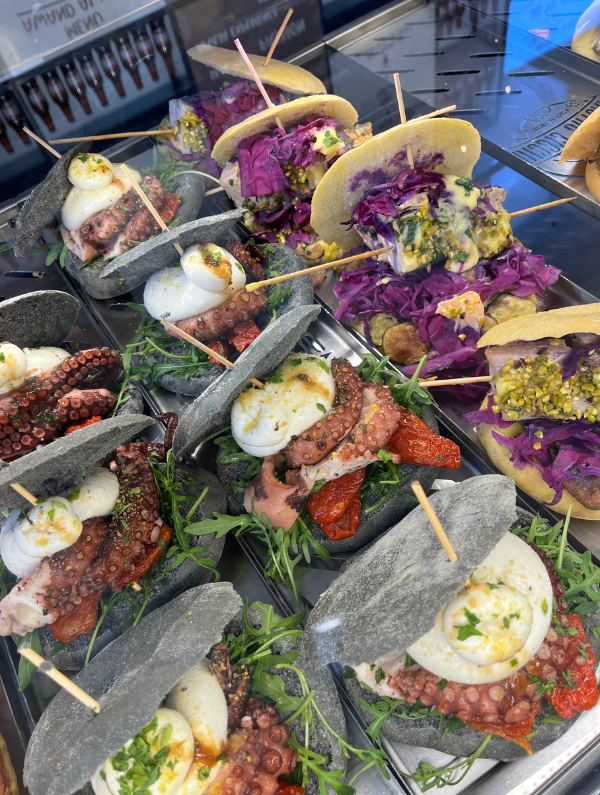
Octopus Sandwich

Frutti Di Mare
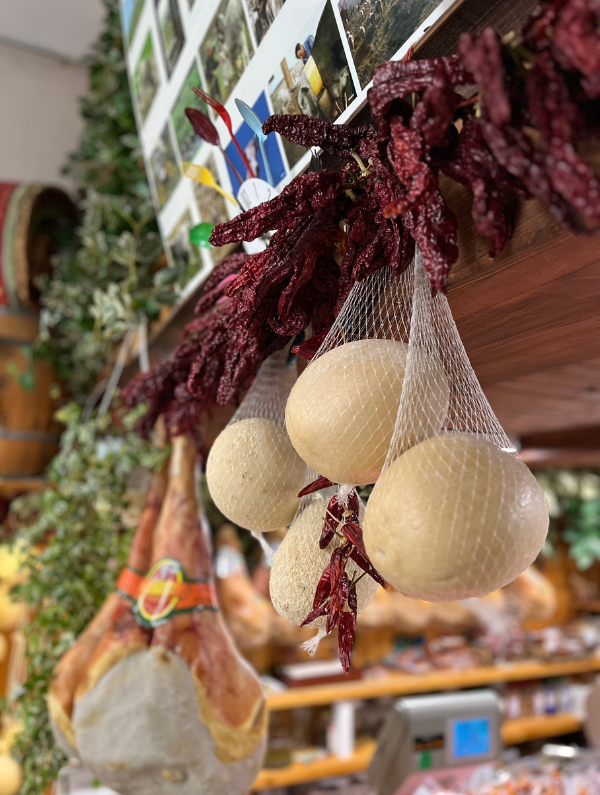
Pepperoni Cruschi & Scamorza

Rustico
Bombette
Martina Franca is a popular destination for its meats, especially the local butchers. For the carnivores out there, any local macellaio (butcher) will surely bring tears to your eyes. These aren’t your average butchers, though. Not only do they carve up a high quality piece of meat for you, but they take it to the extreme. The display case is open season as you choose each piece of meat that you would like to try and they cook it right on the spot. The most popular style in the region is the bombette. This delicacy is made by pounding a piece of meat down on a flat surface then stuffing it with cheeses, seasonings, and vegetables before rolling it up and caramelizing it in a pan or on a grill. The name actually means “small bombs,” which makes sense as they pack an explosion of flavor. If you enjoy the meat sweats, make your way to La Locanada del Macellaio in Lecce for a unique Italian dining experience.
Rustico
For the less adventurous eater, the bakeries of Lecce should soothe your appetite. Rustico, mostly seen as a street food, is made with two layers of puff pastry filled with a combination of bechamel sauce, tomatoes and fresh mozzarella. Essentially a pizza pastry, these scrumptious little round delicacies are a perfect savory snack for any time of day. You’re not doing Lecce right if you don’t bloat yourself up from stuffing your face on multiple rusticos while exploring the historical Baroque streets.
Pasticiotto
The most popular of treats from Lecce are pasticiotto. These incredible pastries are found throughout the city all day but are mostly consumed for breakfast and go perfect with a cappuccino. The iconic pastry is made using a shortcrust filled with pastry cream. Different bakeries may use other fillings such as nutella to add even more sweetness. Traditionally, the crust is made using lard rather than butter so that it is even softer than a regular crust. They are best consumed when fresh out of the oven when they fall apart and melt in your mouth.
I once attempted to eat as many as I could throughout a morning in Lecce to have an understanding of the different styles of pasticiotto, but after the third I found that I could no longer move my body. These pastries are extremely tasty, but also very filling. If you’re looking to show off your summer body at the nearby beaches, maybe stick with one.
Pepperoni Cruschi
Anytime you’re traveling in the South, be on the lookout for pepperoni cruschi, or dried peppers. More commonly found in the neighboring region of Basilicata and the stunning cave city of Matera, this is one of Italy’s ultimate snacks. They are made by hanging local Senise peppers onto a string to dry out. Once dried, they are deep fried in extra virgin olive oil before being salted. The scene of hanging peppers can be found in shops, restaurants and houses throughout the region. Other than being consumed as a snack, they are commonly used to sprinkle on top of a pasta or seved alongside a glass of regional wine such as Aglianico del Vulture or Primitivo. The salty and smoky crunch is addicting and makes potato chips look boring.


